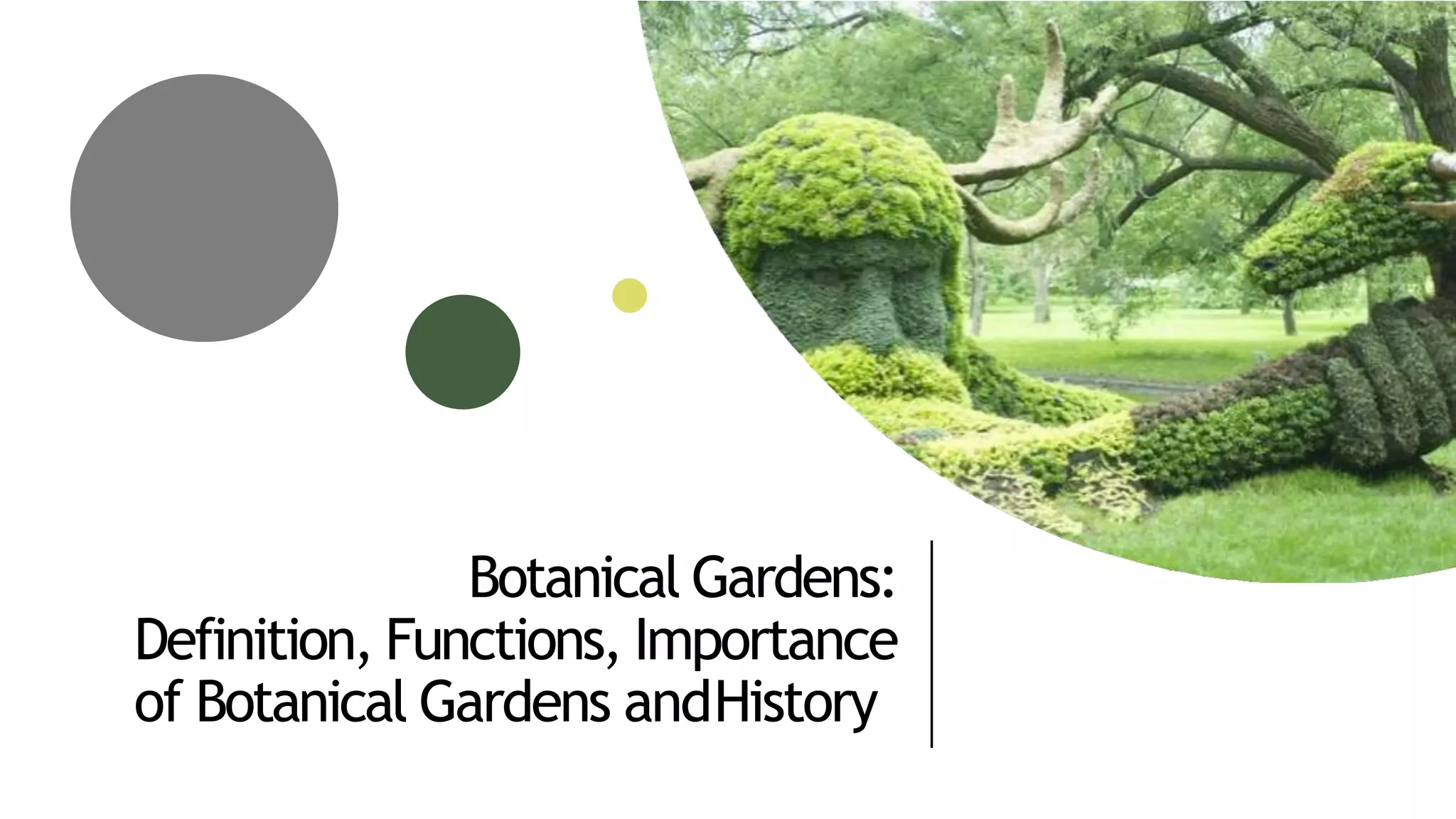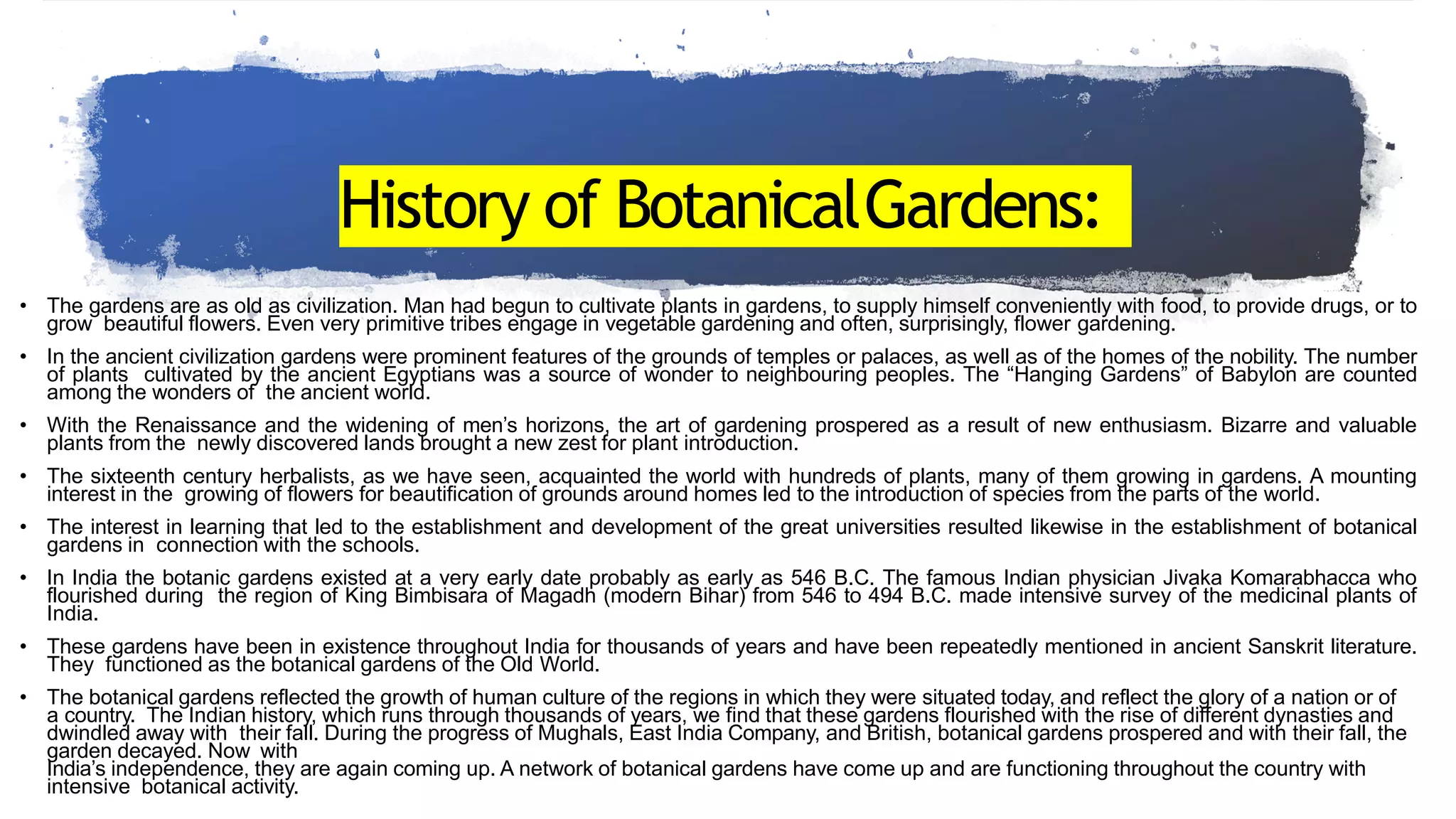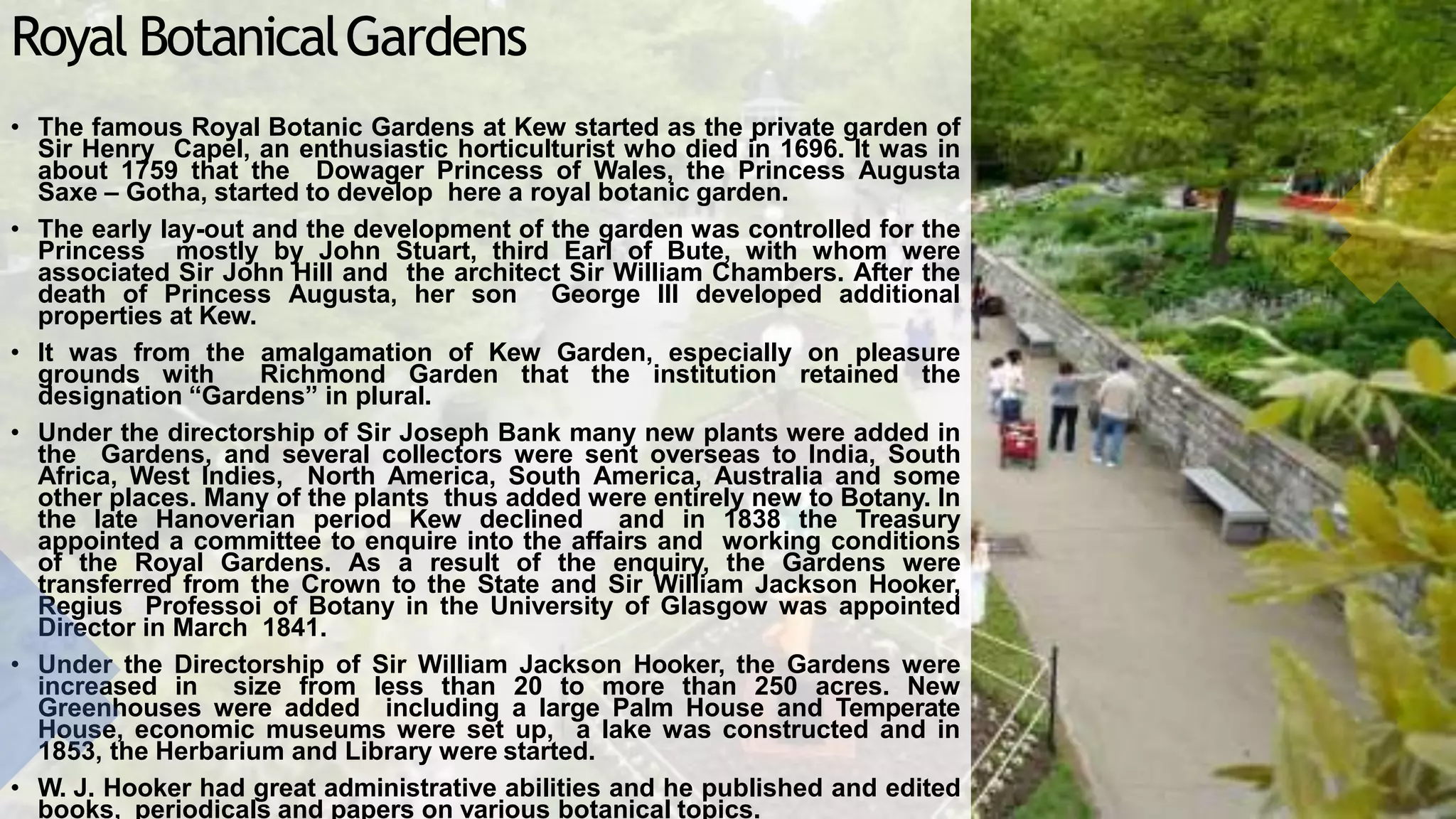This document discusses botanical gardens, including their definition, functions, history, and some examples. It defines botanical gardens as educational institutions that display and study plant life. Their functions include acting as outdoor laboratories for research, conservation, education, and recreation. Historically, gardens date back to ancient civilizations but modern botanical gardens developed with universities to facilitate botanical study. Three gardens are highlighted for their collections and roles in horticulture - Lalbagh Garden in Bangalore, Lloyd Botanic Garden in Darjeeling, and the National Botanic Garden in Lucknow.












